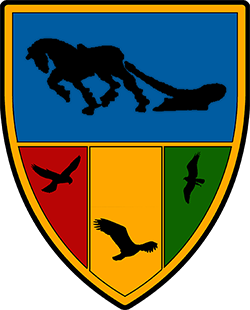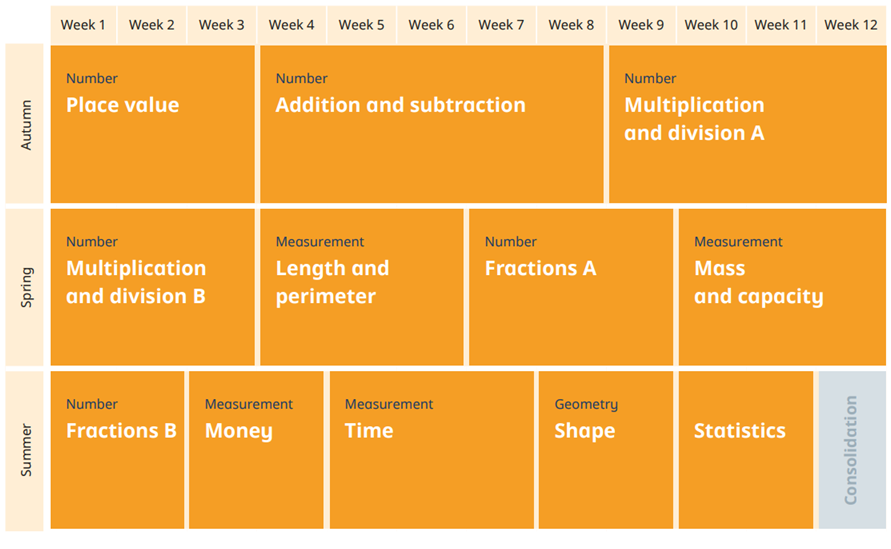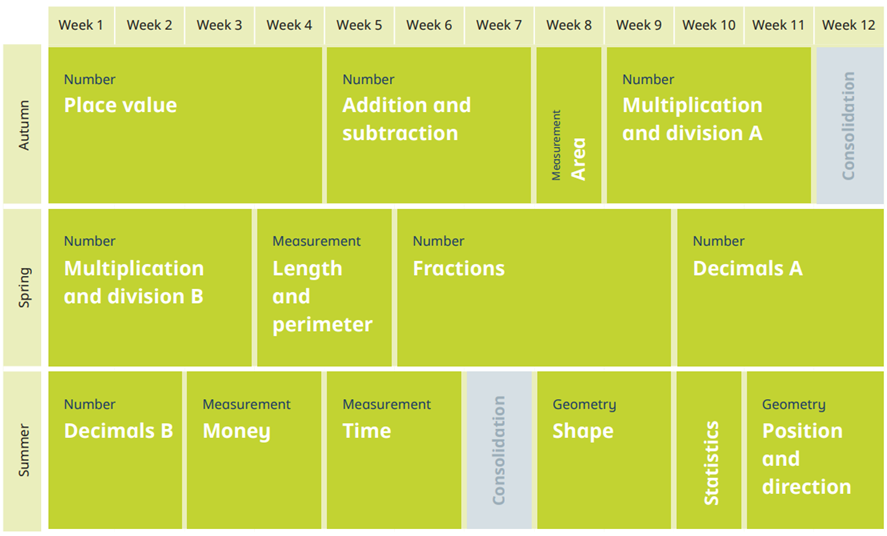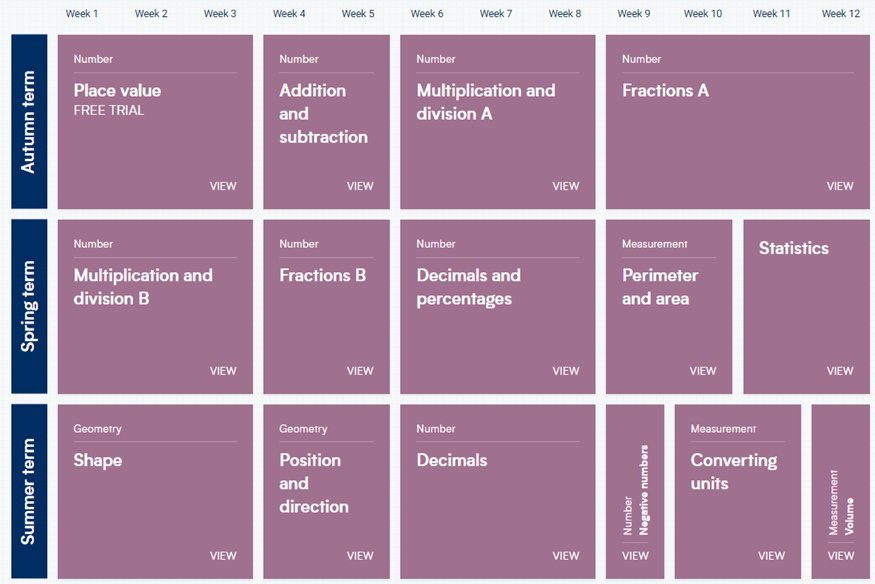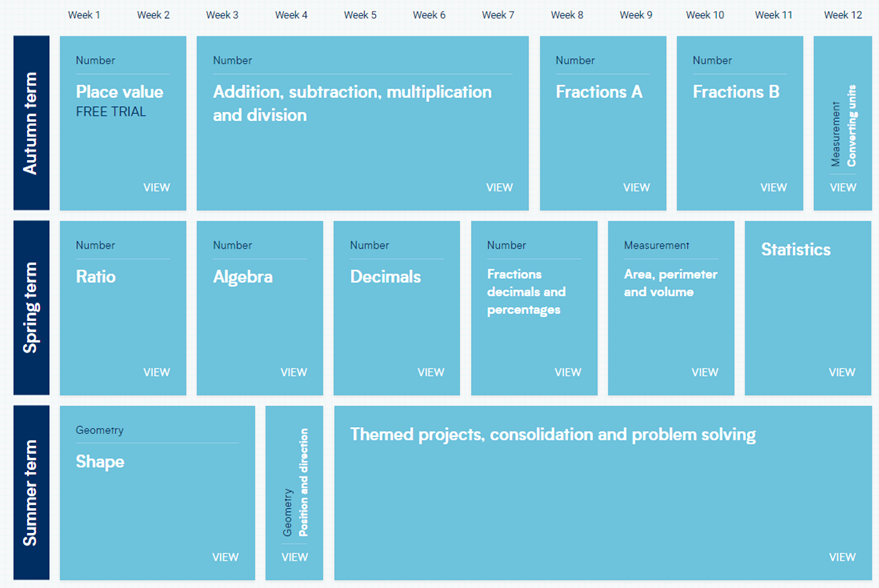Maths
Maths
The maths curriculum at Abbots Farm Junior School is based on the White Rose Maths Schemes of Learning.
Alongside the resources that White Rose Maths produce for use in school, they have also started to produce booklets for parents to access to support their children with maths at home. You can find out more out these resources on their website and if you need any help working out which workbooks would be best for your child, please do not hesitate to contact your child’s class teacher.
The images below show the long term plans for each year group for maths. However, they are not always followed exactly as there may be adaptations to planning made based on assessments of the pupils’ abilities each year.
There are 6 main areas of maths learning which are covered in each year group with increasing complexity.
Place Value
Place value covers all the main elements of number that underpin all other areas of maths. As children move through school, this gets more complex by the size of the numbers children are expected to work with and the difficulty of the problems they are expected to solve using their place value skills. Skills that are covered include reading and writing numbers and understanding the value of each digit with the number, representing numbers in different ways using maths equipment, finding 1/10/10/1000 more or less, ordering and comparing numbers and rounding.
Calculation
Throughout each year, children calculate using all 4 operations, starting with addition and subtraction before moving on to multiplication and division. As with place value, the difficulty increases with the size of the numbers used and then the type of numbers used once children move on to using decimals. Calculating with 2 numbers of different sizes can also make things more challenging for the children as they have to draw on their understanding of place value to ensure they get the correct answer. Download our calculation policy below for more details on how children are taught to carry out calculations involving all 4 operations and how they progress through this strand.
Fractions, Decimals and Percentages
Children in year 3 start by focusing on developing their understanding of fractions followed by the introduction of decimals in year 4 and percentages in year 5. In all 3 of these areas, children always start by learning how to recognise and write them before moving on to more complex concepts such as ordering, calculating and problem solving. By year 6, children are expected to be able to carry out calculations in both fractions and decimals using all 4 operations. Once they have an understanding of decimal numbers, children are then taught to multiply and divide numbers by 10/100/1000 by moving the digits across the place value columns. Children also develop a strong understanding of the links between these 3 areas and are taught to recognise common fraction, decimal and percentage equivalents and work out more complex ones.
Measurement
This area of maths includes many different elements and they all link back to the place value and calculation learning that children have previously done. Measurement inlcudes money, time, length, mass and capacity. It also encompasses perimeter from year 3, area from year 4 and volume from year 5. One of the key concepts that children need to understand to be successul in this area of maths is the links between different units of measure and how to convert between them to enable them to correctly solve problems.
Shape
This area covers names and properties of both 2D and 3D shapes but also looks at position and direction. This includes recognising, drawing, measuring and calculating angles as well as co-ordinates, translation, reflection and rotation.
Statistics
Statistics is about interpreting and presenting data in a range of different formats starting with pictograms and bar charts, progressing to line graphs and pie charts as well as looking at tables, especially those used in everyday life such as bus timetables or tv programme schedules. The more complex interpretation also involves the use of the mean as an average.
Ratio and Algebra
These 2 areas of the maths curriculum are only specifically covered in year 6 and are vital to support children in their tranistion to a secondary school maths curriculum. Ratio is mostly used in the context of problem solving and often links to real life situations such as scaling recipes up or down. In algebra, children are taught to recognise patterns and sequences before moving on to learning how to represent calculations and problems algebraically. Although algebraic notation is not introduced to children until year 6, algebraic thinking starts much earlier on with activities such as finding a missing number or completing a sequence that can be found in every year group.
